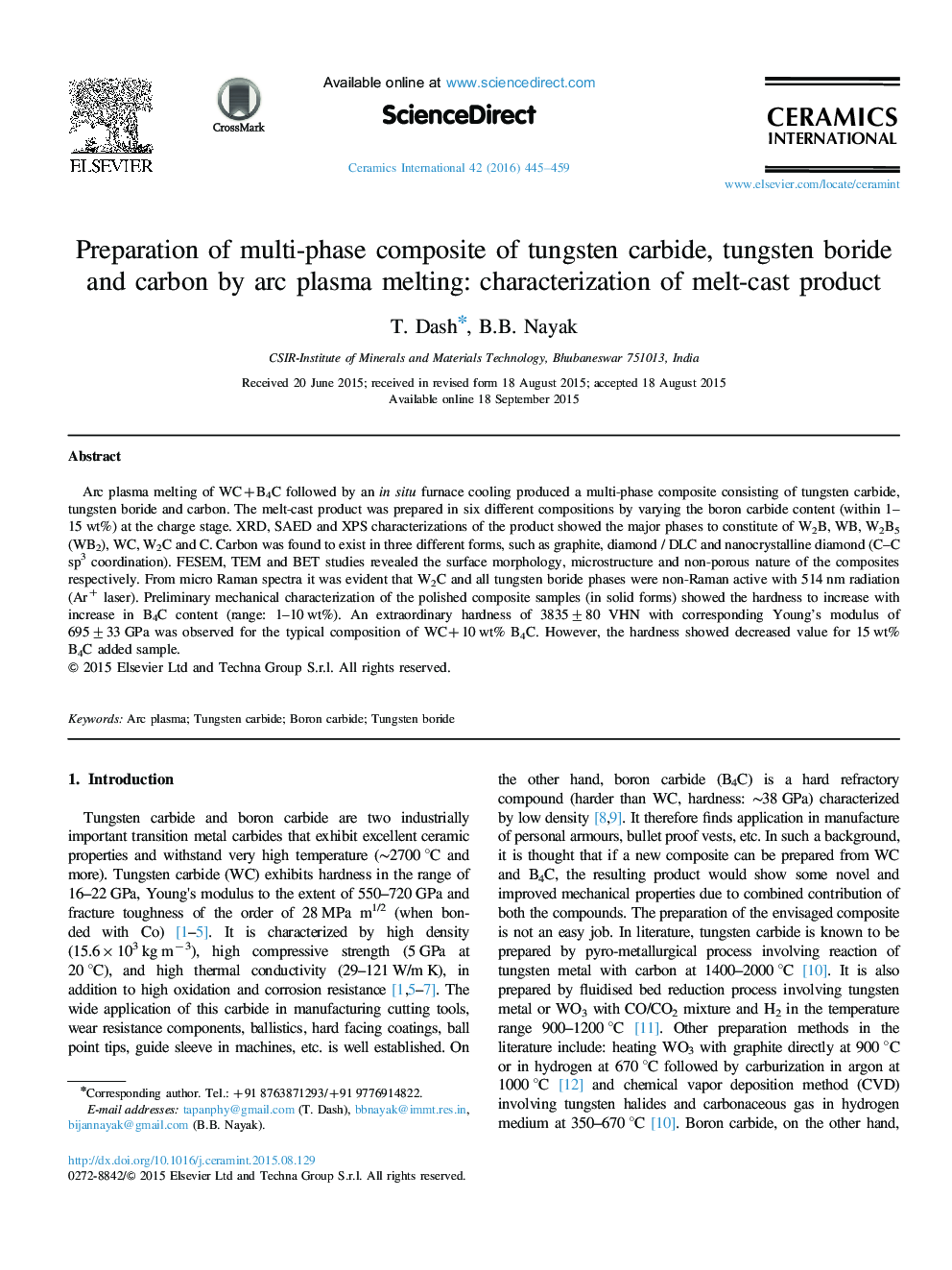| Article ID | Journal | Published Year | Pages | File Type |
|---|---|---|---|---|
| 1459450 | Ceramics International | 2016 | 15 Pages |
Arc plasma melting of WC+B4C followed by an in situ furnace cooling produced a multi-phase composite consisting of tungsten carbide, tungsten boride and carbon. The melt-cast product was prepared in six different compositions by varying the boron carbide content (within 1–15 wt%) at the charge stage. XRD, SAED and XPS characterizations of the product showed the major phases to constitute of W2B, WB, W2B5 (WB2), WC, W2C and C. Carbon was found to exist in three different forms, such as graphite, diamond / DLC and nanocrystalline diamond (C–C sp3 coordination). FESEM, TEM and BET studies revealed the surface morphology, microstructure and non-porous nature of the composites respectively. From micro Raman spectra it was evident that W2C and all tungsten boride phases were non-Raman active with 514 nm radiation (Ar+ laser). Preliminary mechanical characterization of the polished composite samples (in solid forms) showed the hardness to increase with increase in B4C content (range: 1–10 wt%). An extraordinary hardness of 3835±80 VHN with corresponding Young’s modulus of 695±33 GPa was observed for the typical composition of WC+10 wt% B4C. However, the hardness showed decreased value for 15 wt% B4C added sample.
